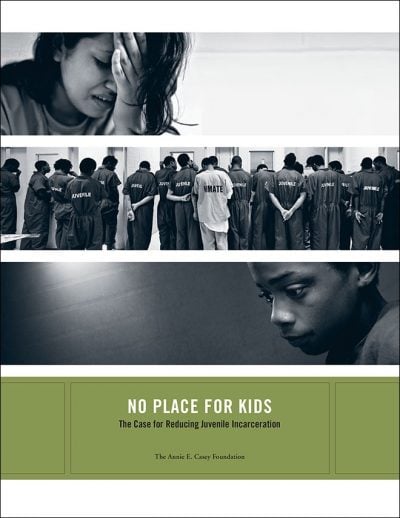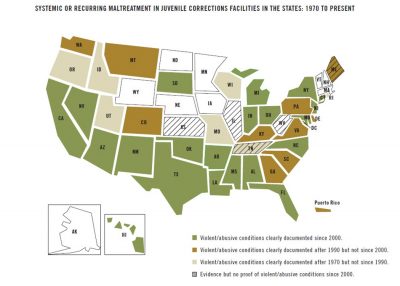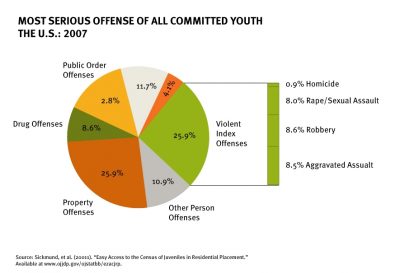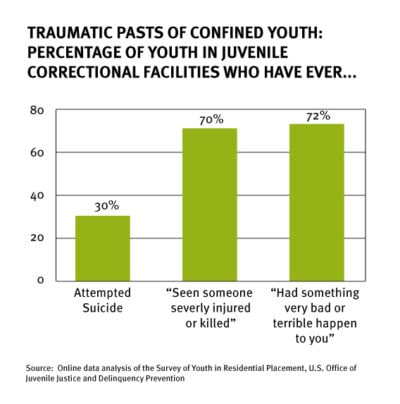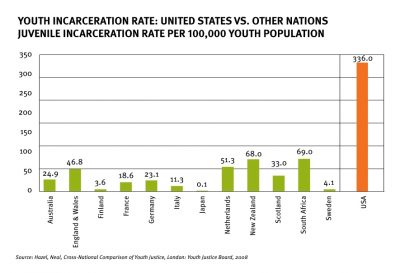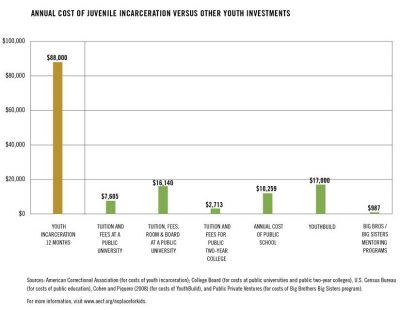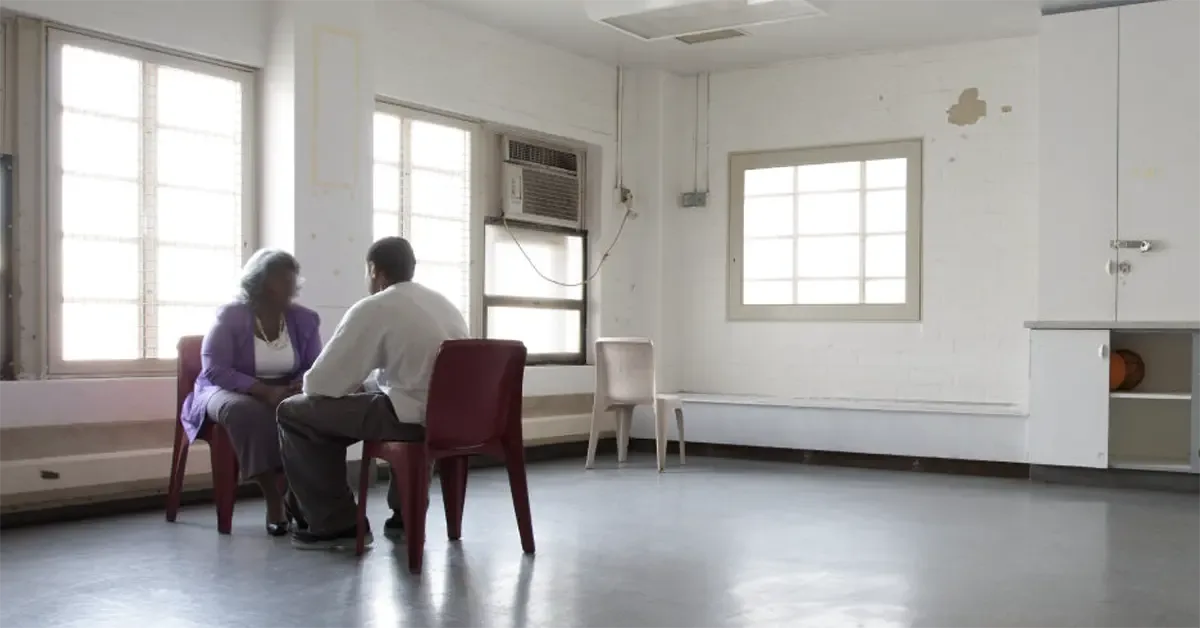Summary
Backed with an array of research, the case against America’s youth prisons and correctional training schools can be neatly summarized in five words: dangerous, ineffective, unnecessary, wasteful and inadequate. This report highlights successful reform efforts from several states and provides recommendations for how states can reduce juvenile incarceration rates and redesign their juvenile correction systems to better serve young people and the public.
In addition to the full report, the Foundation published a No Place for Kids issue brief and a news release. As a supplement to the report, find state-level data on juvenile confinement in the Finding & Stats section below.



